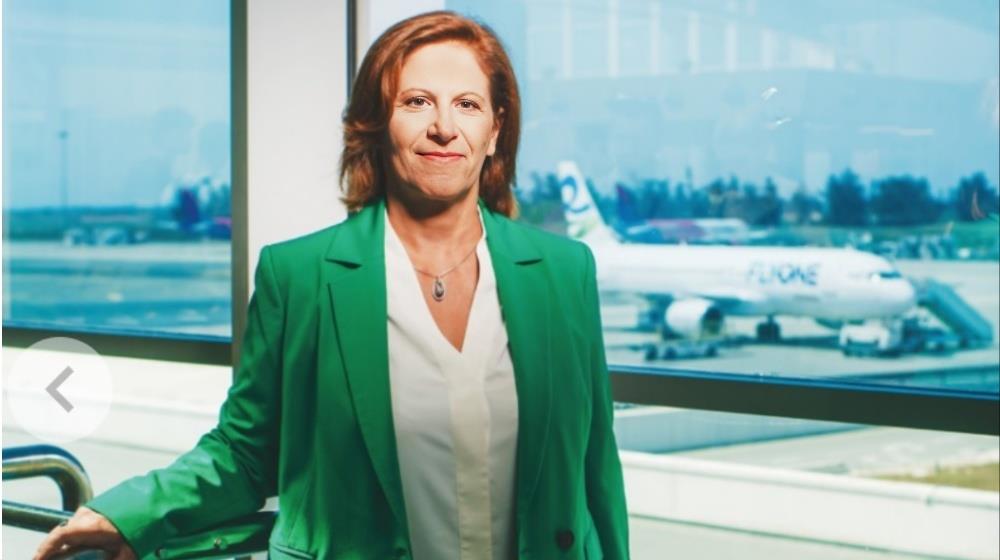By Maria Kouroupi
On a small island like Cyprus, tourism concerns everyone, as it both depends on and influences the lives of its residents. For this reason, it must maintain continuity in its strategic planning and, above all, in its implementation.
We are talking about an industry that began prior to 1974, was reborn from the ashes, and has faced—and continues to face—multiple challenges such as the recent pandemic, wars, financial crises, airline and major tour operator bankruptcies, and increased competition from other destinations. Over time, what emerges is not only its resilience but also its ability to recover and grow, especially when it receives the necessary support.
International recognition
A key parametre in tourism development is air connectivity, which often raises the classic chicken-and-egg question.
Cyprus has never been in a better position than it is today in this regard, according to the annual report of Airports Council International. The report notes that in 2025, Cyprus’ airports record the highest growth rate in Europe—18%—in terms of direct flights and number of destinations. This aligns with our estimate that passenger traffic this year will exceed 13.3 million total passengers, which will have a direct impact on tourist arrivals.
Equally important is the fact that flights are being operated this year from Cyprus’ two airports by 58 airlines, serving 158 routes across 39 countries.
The examples of France and Italy
The development of connectivity depends on many factors but primarily on whether an airline’s plan at a given moment coincides with the capabilities and potential of a destination, ensuring mutual benefit.
Over the past decade, Cyprus has achieved significant improvements in air connectivity, mainly due to the arrival and growth of low-cost carriers. These airlines expanded the market by opening up new routes, giving new categories of customers the chance to visit our country, while also enabling Cypriots to travel abroad at competitive fares.
The demand created prompted other airlines to add routes or increase their flight frequencies. Two tangible examples are the large markets of France and Italy, where we started with zero connectivity. This summer, both markets are served with more than 20 weekly flights each, and from all types of airlines.
Freedom of movement and choice
The world around us is changing, creating both new opportunities and corresponding challenges. Both the aviation and tourism industries operate in an environment that changes very easily, requiring vigilance and adaptability.
The pandemic perhaps accelerated the establishment of a new travel culture with different demands and realities.
Today’s and tomorrow’s travellers prefer value-for-money options, want flexibility in accommodation and mobility at their destination, and are willing to pay more to secure this freedom of movement and choice. In recent years, individual travellers who wish to move at their own pace and enjoy experiential activities have also increased in our country. They want cleanliness and quality, variety and authenticity in food and entertainment. They want to live a story they can share with their friends.
Something for everyone
Sustainability issues and the adoption of measures that protect the environment and promote the well-being of local communities are now essential, while also providing many opportunities to diversify our tourism product.
Climate change increasingly affects our region, making tourism development during off-peak months almost a one-way street for maintaining competitiveness. Besides, airlines prefer destinations with year-round demand over seasonal routes.
I often challenge international colleagues I meet abroad—those who either haven’t visited our country or who have a one-dimensional view of Cyprus as only sun and sea—by saying: “Tell me what you like to do on holiday, and I’ll tell you where you can find it in Cyprus, where there is something for everyone.”
Cyprus is also its people
Cyprus can offer a multidimensional tourism experience. On one hand, there is the light, the clear waters, the short distances, the good road network that allows everyone to explore the country with ease and safety. On the other hand, Cyprus is not only its landscapes and infrastructure, but also its people.
There are talents in music, art, dance, craftsmen and creators who can enrich the tourism experience. Most of them operate within a limited scope, relying on occasional private initiatives. We must showcase these people, support extroversion, and make such experiences part of the story we want visitors to tell when they leave Cyprus.
A common language for a shared brand
The various forms of special-interest tourism that have developed in recent years—such as wine routes, gastronomy, wellness, sports, and conference tourism—add diversity to the options available. However, they need to be developed under a holistic marketing approach, with the creation and promotion of a tourism identity (brand) that incorporates Cyprus’ comparative advantages.
Promoting the country now requires cooperation between the private and public sectors, so that there is a common language, the creation of modern content, and, of course, the joint use of funds that will allow for deeper market penetration in attracting visitors.
Do not fear change
The tourism industry is a chain of actions, experiences, infrastructure, behaviors, and culture, where every link has its role and importance.
We are all aware of the difficulties and problems faced by each professional. Despite the criticism we sometimes receive and also level at one another, no one can dispute the determination and persistence with which every industry stakeholder confronts challenges.
We need to believe in our strengths, be proud of our country, and not fear change so that the tourism industry can succeed in the new era.
*Maria Kouroupi, Director, Aviation Development, Marketing and Communication, Hermes Airports
(Original photo by TADOBI)
This article was originally published, in Greek, in the August issue of InBusiness magazine and then in the most recent edition of Hermes Airports' online newsletter, Flight Mode. Click here to view it.









